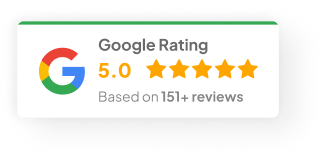29 Sep 25
Self-Service Portals: Why They’re Becoming the Standard in B2B Commerce
B2B buying isn’t what it used to be. Long phone calls, endless back-and-forth emails, waiting days for updates—buyers simply don’t have the patience anymore. They’ve been spoiled by the speed of consumer shopping, and now they expect the same convenience in their work lives. The catch? A lot of suppliers are still stuck with clunky, outdated systems that frustrate customers and slow everything down. That’s where self-service portals come in.
Buyer Expectations and Digital Autonomy
Today’s B2B buyer wants the same autonomy they get when shopping online for personal needs. That means being able to check stock, compare prices, and place orders without having to chase a rep. According to a report from Spryker:
- 95% of buyers say self-service portals make purchasing more efficient
- 66% report saving 30–60 minutes per transaction with portals
- 79% believe portals will be key to B2B purchasing and aftersales in the next three years
The message is clear: buyers want transparency and speed. They’re not looking to cut reps out entirely, but for routine tasks? They’d rather just handle it themselves.
Efficiency Gains & Lower Operational Costs
Portals do more than make customers happy—they cut costs and free up staff for work that actually adds value.
That kind of efficiency doesn’t just make the buyer’s life easier. It reduces manual errors, speeds up order cycles, and helps suppliers compete by getting goods out the door faster.
Competitive Differentiation & Retention
B2B buyers are voting with their wallets. Having a portal—or not having one—can be the deciding factor in who wins repeat business.
- Portal availability impacts their decision to keep buying from a supplier
- Among those who use them, portals are often rated as a preferred channel for aftersales purchases
This is where many suppliers underestimate the stakes. Lack of a portal isn’t just an inconvenience—it’s a dealbreaker for customers who’ve experienced the ease of digital-first competitors.
Transparency, Real-Time Data & Better User Experience
A portal is more than an ordering tool. It’s a window into everything buyers care about: inventory, pricing, shipment tracking, past orders. These features build trust because they eliminate guesswork.
- Users value the ability to trace purchase history
- 75% like having on-demand access to product details
- 66% appreciate transparent pricing and inventory visibility
On the flip side, non-users reported far more frustration with slow responses, vague approvals, and limited visibility. That gap alone shows why SSPs are quickly becoming a baseline expectation.
The Gap Between Demand and Supply
Here’s the surprising part: even though buyers clearly want portals, many vendors aren’t offering them yet.
SSPs are the second most preferred channel for B2B aftersales purchases. But in practice, they only rank fourth in actual usage.
That disconnect is both a risk and an opportunity. Companies dragging their feet risk losing relevance. The ones who move now can leap ahead of competitors.
Features Buyers Expect (and the Challenges Suppliers Face)
A self-service portal isn’t just a digital catalog. To meet expectations, it has to deliver the features that matter most:
- Real-time pricing and availability
- Order tracking and full history
- Live or AI-driven chat support
- Mobile-friendly access
- Role-based permissions for larger buying teams
- Backend integration with ERP, inventory, invoicing
The challenges? Technical reliability, data accuracy, and security. A clunky or insecure system can undo all the goodwill a portal is supposed to create.
What’s Next
The trend is obvious—self-service portals are cementing themselves as the standard in B2B commerce. What’s likely to happen next:
- Bigger investments in portals with predictive analytics, AI recommendations, and flexible workflows.
- Continued demand for B2C-style convenience: quick reorders, mobile-first access, instant updates.
- More pressure on laggards who don’t keep up—because customers won’t wait around.
- Growth in supply chain and aftersales automation, especially in industries dealing with spare parts, warranty claims, or recurring orders.
Wrapping It Up
Self-service portals are no longer a nice-to-have. They’re a competitive necessity. The data says it all: buyers save time, suppliers cut costs, and satisfaction goes up on both sides. Businesses that build reliable, feature-rich portals are already standing out, while those that don’t risk being left behind.
If you’d like, there are plenty of real-world case studies in manufacturing, tech, and industrial sectors that show exactly how much value SSPs can create.


